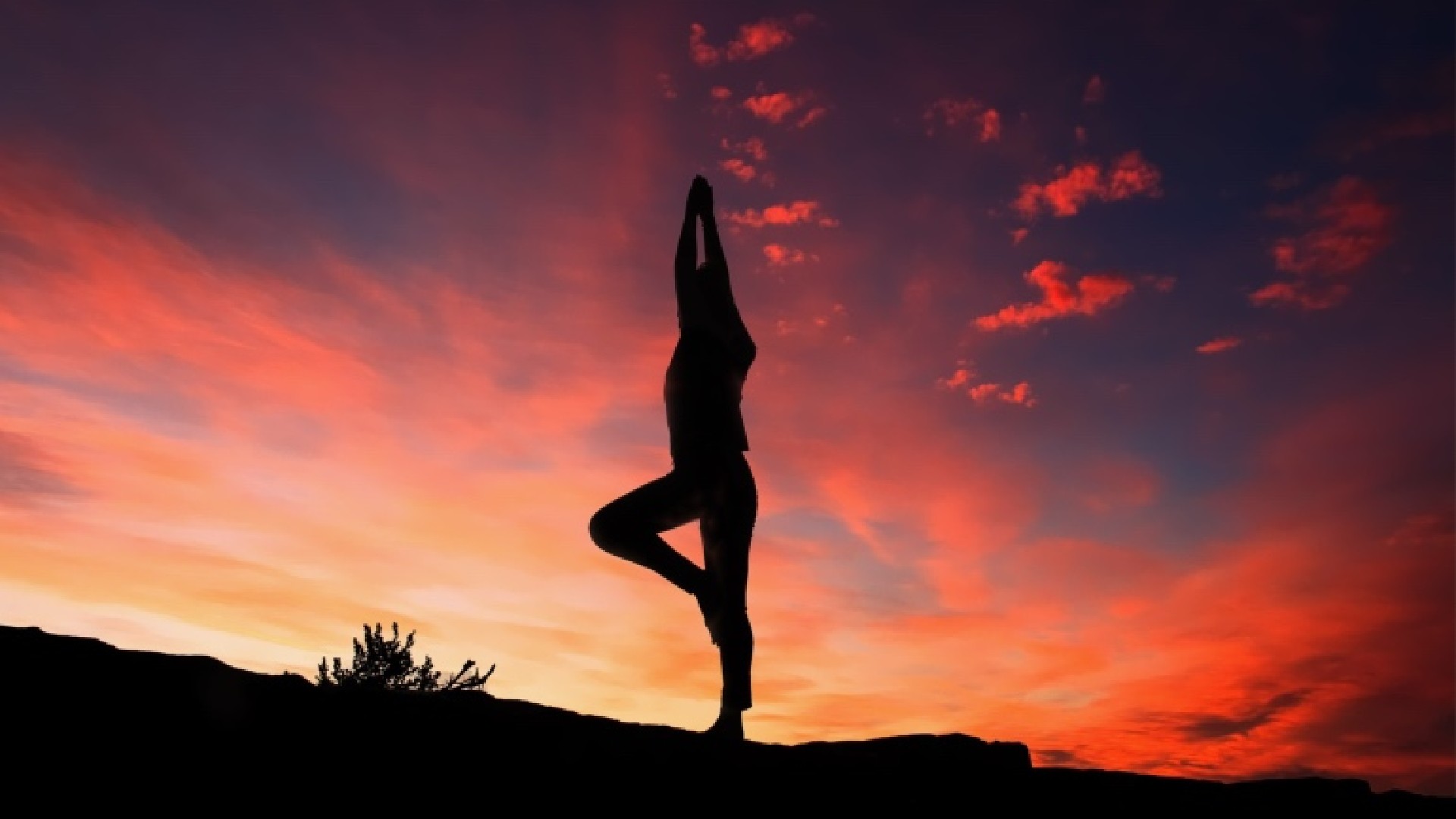The Surya Namaskar or Sun Salutation is one of the oldest ways to express gratitude to the sun. It is typically performed in the morning when greeting the sun. There are eight asanas performed in a sequence of 12 steps for each side, right and left, as set of fives. As you perform this sequence, take a deep breath and move your body as you do.
In addition to being beneficial for the mind, it is also beneficial for the body. By performing Surya Namaskar daily, weight loss is facilitated, muscles are strengthened, and immunity is boosted. The practice also improves blood circulation and reduces anxiety. The Surya Namaskar consists of 12 poses.
1. Pranam Asana (The Prayer pose)
As you stand upright on the mat, place your feet close together and then begin the first pose. Relax your shoulders and breathe deeply. Inhale deeply, raise your arms from the sides, and as you exhale, join your palms together in front of your chest.
2. Hasta Uttanasana (Raised arm pose)
Take a deep breath while holding your palms together. To stretch properly, lift your arms up while slightly bending and push your pelvis forward. Backward stretches lengthen the spine. Stretch the whole body up from the heels while keeping the biceps close to your ears.
3. Padahastasana (Standing forward bend)
Take a deep breath and bend forward to touch your toes with your fingers. Your spine should remain straight. Press gently onto your heels so that your body weight is evenly distributed.
4. Ashwa Sanchalanasana (Equestrian pose)
As much as you can, push your right leg back and touch your right knee to the floor. Make sure your weight is distributed evenly and look up as much as you can.
5. Santholanasana (Stick pose)
Bring your right leg back next to your left. Breathe deeply. Keep your hands under your shoulders and keep your body parallel to the ground. You should maintain a single line throughout your body.
6. Ashtanga Namaskar Asana (Eight limbed salutation)
The goal of this pose is to bring your knees together to the floor and exhale. Your chest and chin should face downward, so you should push your hips backward and make your body slide forward. All eight parts of your body should touch the ground.
7. Bhujangasana (Cobra pose)
Your legs and abdomen should be flat on the ground as you slide forward. Keeping your palms close to your chest, press on your hand and slowly lift your upper body while your pelvis touches the ground. Keep your shoulders away from your ears, your feet tucked in, and look forward.
8. Adho Mukha Svanasana (Mountain pose)
Make a mountain pose by pushing your hips up and your chest forward. Open your collarbones and pull your shoulders back. Keeping your heels on the ground, lift your tailbone while engaging your legs.
9. Ashwa Sanchalanasana (Equestrian pose)
Put your right foot forward between your hands and bring your left knee to the ground while inhaling. Bring your hips down while looking up.
10. Padahastasana (Hands to foot pose)
Exhale and bend down while placing your toes aligned to each other. Touch your toes with your fingers. Bend the knees if needed, gently straighten the knees, and try to touch your nose to the knees.
11. Hasta Uttanasana (Raised arms pose)
Breathe in and raise your hands above and stretch back your spine. Push your hips outwards. Gaze towards the ceiling while bending backwards. Also, make sure that your biceps are beside your ears.
12. Pranam Asana
Stand at the end of your mat and keep your feet together and distribute your weight on both feet equally. Straighten your body and just relax your shoulders.
